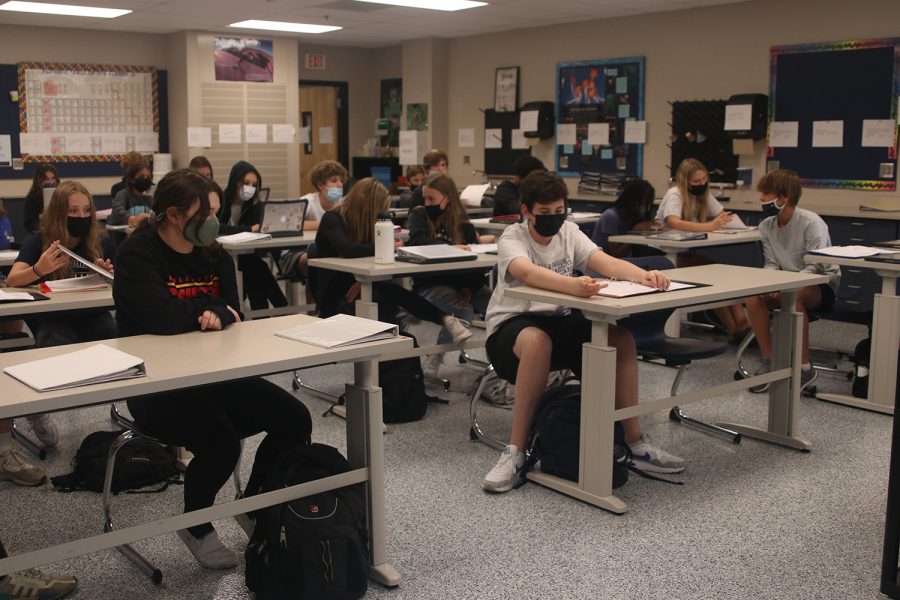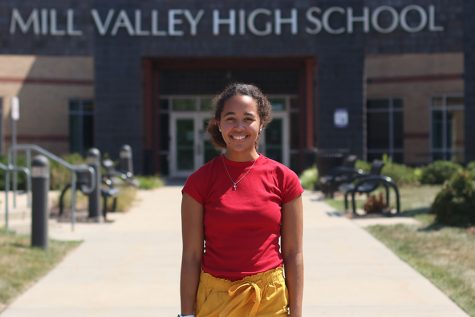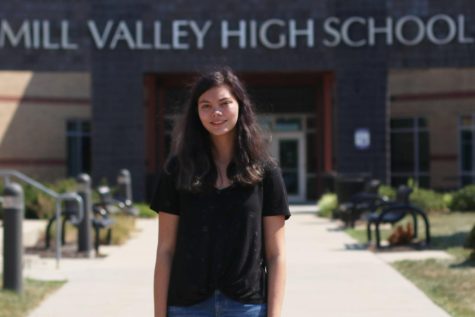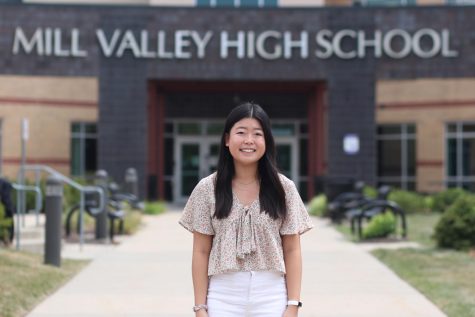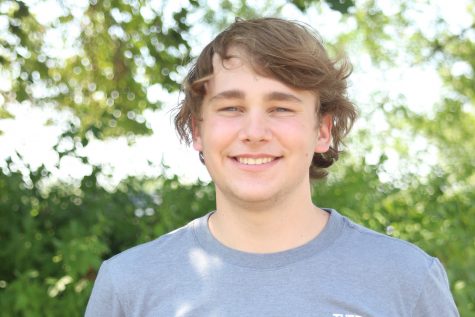Board of education votes to make masks optional at the high school level
The declining spread of COVID-19 throughout the community has prompted the school board to lessen mask restrictions for grades 9-12
By Abby Steiger
In a classroom full of masked students, Tuesday Oct. 19 will be the last day full masking is required by the Board of Education for high school students.
October 19, 2021
The board of education, at a special meeting on Monday, Oct. 18, unanimously voted to make barrier face masks optional for high school students effective Wednesday, Oct. 20. Barrier face masks will still be required for staff and students at the elementary and middle school levels.
Standing by the board’s decision to still require face masks from teachers and staff, social studies teacher Jeff Wieland feels a sense of obligation “as a professional” to “protect” unvaccinated students.
“We have kids in class who may want to wear masks with optional masking,” Wieland said. “As a teacher, I need to model the fact that that is still okay. There are going to be a lot of unvaccinated kids in our school that we need to look out for. The long term solution to this isn’t so much masking but increasing our vaccination rate. The sooner a greater percentage of the community becomes vaccinated, the sooner we can put this whole debate behind us.”
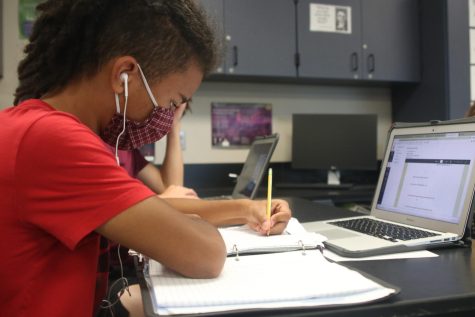
The board made the decision to make masks optional at the high school in light of the declining community spread of COVID-19, declining spread among students and the high rate of vaccinations among high school-aged students and adults. In an effort to respond to potential increases in COVID-19 cases, the Board voted to add metrics for when barrier face masks would be reinstated for high school students and staff, according to an email sent to staff from district assistant superintendent Alvie Cater.
Masks will remain optional if the percentage of recommended quarantines and isolations do not exceed 4% of a high school’s student enrollment. According to the district’s COVID-19 dashboard Mill Valley holds a 0.23% exclusions and isolations rate as of Oct. 13.
Wieland believes the county has not yet reached a point of being able to make face masking optional; however, Wieland credited the board with making a decision that looked out for “the good of the whole community to the best of their ability.”
“The board has a way of seeing interests,” Wieland said. “If you’re looking solely at Johnson County Health Department’s CDC recommendations, we’re probably not quite ready to get rid of masks. The board was making the best decision it could, balancing competing interests and trying to do the best it could with data.”
Upon discovering that masks would be optional at the high school level, junior Sophia Chang reacted with displeasure.
“I wasn’t surprised [when the school board made face masking optional] but I was pretty disappointed,” Chang said. “I just feel like no one represents my feeling of wanting to keep masks. I feel like most students don’t feel the same way I do and everyone has their own opinion but it’s worrying because this is public health and safety. It seems like no one feels like we should be getting better as a nation but rather about their opinions on masks.”
A little less concerned, senior Katie Bonnstetter does not mind the new upcoming implementation.
“This late into the school year, I’m not surprised that the school board switched to optional masks [for high school students],” Bonnstetter said. “In some classes I will wear my mask because of some of the people in there. In other classes where I feel more comfortable, I will take my mask off.”
If the percent of recommended quarantines and isolations is greater than 4%, barrier face masks will be required as they are in other USD 232 school buildings for at least two weeks and the percentage of recommended quarantines and isolations is less than 2% for two consecutive weeks.
In an effort to provide an option to help keep all students and staff in school, the district will provide voluntary COVID-19 testing through their Test to Stay and Learn plan.
In spite of efforts made by the district to mitigate the spread of COVID-19 throughout schools once masking is made optional, Chang does not hold an optimistic outlook on the future of attending school in-person.
“I think that a lot more people are going to get sick,” Chang said. “Although most people don’t wear their masks correctly anyway, it’s still a scary thought.”
Sharing the same apprehensions, Bonnstetter fears that quarantine levels will rise come holiday break.
“For a while [optional masking] will be fine, but over the holidays, if people travel and then get sick, the spread of COVID-19 at school will gradually get worse,” Bonnstetter said.
Due to federal regulations, barrier face masks are still required for high school students and staff on school buses and district vehicles.



